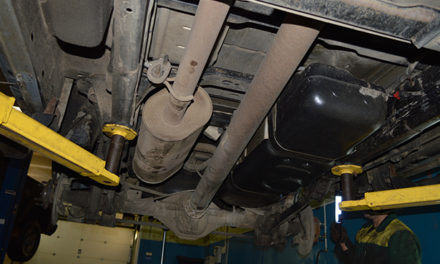Whether you love or can’t stand the odor of gasoline, a vehicle that smells like gas most likely has a leak somewhere within the fuel delivery system. Since gasoline is flammable, this presents a major hazard and requires an immediate fix. Here are some tips on how to identify and repair the source of the problem. Warning: If you think you might have a gasoline leak, don’t turn on the car!
- Is there a gas leak?
Check the fuel injection line and the fuel tank vent hose for signs of leakage. These are the most common places for leaks to appear. - Look for the leak.
First, see if the top of the engine has wet gasoline; look near the spark plugs, injector lines. At the back end of the car, look for drips around the fuel tank. Also look near the fuel pump, whether it’s located under the hood or by the fuel tank. If you’re not sure where a leak is coming from, place drip pans or cardboard under the car. In general, leaks from the front of the car indicate a problem with the fuel injector; leaks in the back point to the fuel tank. - Replace components content preview.
As you hunt down the source of the leak, replacing certain items may fix your problem. For instance, all of the fuel lines and fuel line fittings are possible weak points, as are the vacuum line fittings. The fuel injectors may need to be cleaned or replaced, or you might have a faulty gas cap. - Check the ignition.
Timing If the timing is off, meaning the spark isn’t hitting the combustion chamber at the right moment, then this could hurt your fuel economy as well as your engine’s power and life expectancy. Since ignition timing is affected by so many factors, you may need to look into this more thoroughly with a mechanic’s help. - Check the fuel pressure regulator.
If the pressure is set too high, then too much gas is consistently being sent to the engine. The excess amount normally flows back into the gas tank, but if the diaphragm is faulty, then gas may leak into its vacuum tube. You could try resetting the pressure, but if your diaphragm is broken, then the fuel pressure regulator has to be replaced. - Still stuck?
If your vehicle still smells like fuel despite these fixes, then it’s time to call in a professional mechanic. To help him out, tell him what you’ve already tried.











